#Ararat museum
Text
14/10/2023 15:45

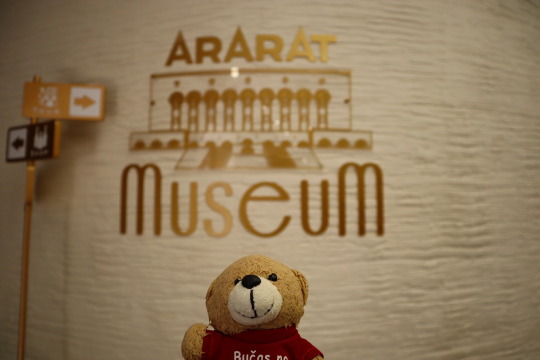




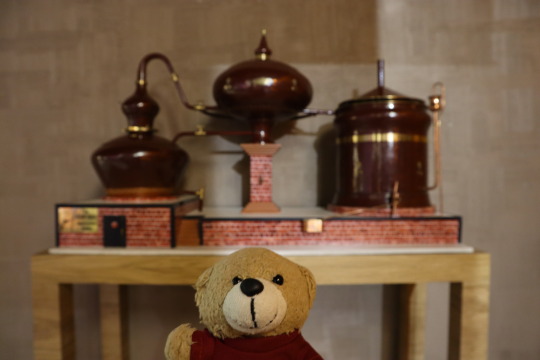
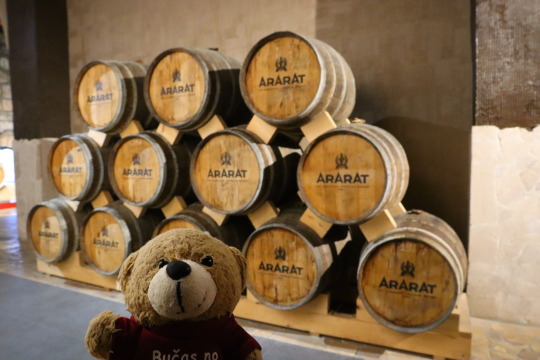






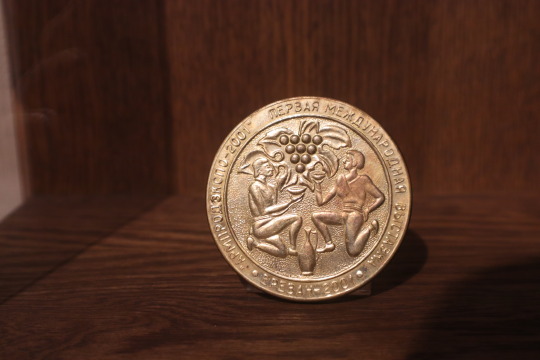

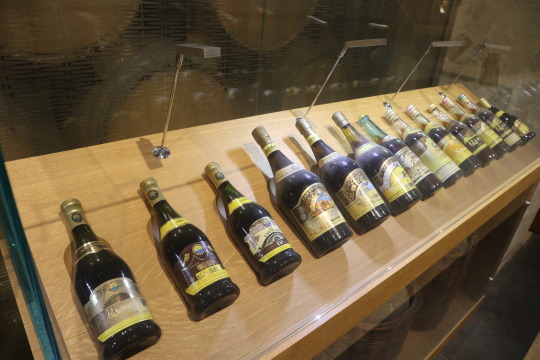












アララトブランデー醸造所🍷
追加観光で醸造所を見学&テイスティングさせてもらいましたが、一口入れたら口の中が燃えます🔥
アルコール度数40度超えだったそうですomg
建物の入口にいた警備員さん(これまた今回の旅で間違いなくNo.1のイケメンくんでした)とうちの相棒の記念撮影を試みましたが、突然、必死の形相でNo! No! No!と必死に断られました。
「僕はsecurityだからNoなんだよーー!!」
また、私は知りませんでしたが、アララトブランデーはお酒好きには密かな人気があるらしく、売店で爆買いしている方も多数いらっしゃいました。
#備忘録#reminder#photography#Armenia#アルメニア#アララトブランデー#🍷#Ararat brandy#Ararat museum#Ararat Moments#🇦🇲#イケメン見つけた笑
21 notes
·
View notes
Text


A wedding gown from Agn that belonged to the Jamgochian family. It is currently housed in the Ararat-Eskijian Museum in Los Angeles. Houshamadyan.
Dress from Arabkir, mid 19th century. History Museum of Armenia.
45 notes
·
View notes
Note
Hiii I hope this isn’t weird but I’m traveling to Australia soon and I would like to know
what to do{I got recommended The Blue Mountain(The3sisters)}
Is there things(places) I should avoid?
Is there any customs Americans have that should avoid doing while in Australia?
Thank you so much I appreciate your time and response ♥️
Hey! Depends on where you're going. By the sound of it, if you've been recommended the Blue Mountains you're going to NSW. I don't know anything about NSW unfortunately, but I can tell you some stuff about Victoria!
I'll try and write some general stuff up, but if you send me another ask about what sort of stuff you'd be interested in doing/seeing, and how you're travelling (if you're planning to hire a car, or if you're going to rely on Ubers and public transport), I'd be more than happy to point you to some specific things :)
This'll be long, so I'll put it under the read more.
It depends what you're after, really. If you want to immerse yourself in nature, then we have some really fantastic natural areas such as the Otways, the Great Ocean Road, the Dandenong Ranges (not to be confused with the suburb Dandenong), the Yarra Ranges, the Macedon Ranges, and Victorian High Country etc. These are really fantastic places to walk around in the beautiful land. All these offer different hikes/bushwalks/walking trails that you can enjoy either by yourself or a mate. All these areas are very safe.
AVOID: TBH Victoria and Australia as a whole are very safe places, the only places I would recommend avoiding are outer suburbs of Melbourne. If you're going to the countryside you're largely going to be safe, I wouldn't recommend Ararat at night (they do have a really fantastic Chinese Museum there though), or some parts of Shepparton.
If you're interested in hanging out by the beach, there's heaps here. I wouldn't recommend Brighton beach, just because if it's a pain in the arse to get parking there depending when you'll be here, nor would I recommend Rye because it gets mad crowded. I'd also suggest going to Phillip Island, which has some cool stuff to do such as A Maze N' Things, which I think is geared more towards young children/families but I can't really recall. Phillip Island is most famous for its penguin parades, where you get to watch all the tiny little fairy penguins arrive home from their long days of fishing and swimming about. If you're really keen on animals, I also recommend Healesville Sanctuary (near the Yarra Ranges, it's about an hour and a bit from Melbourne), Werribee Open Range Zoo, and Melbourne Zoo (if you go to Melb Zoo, leave the car at home and take the tram! There's a stop right out the front :) ).
If you're keen on relaxing there's Daylesford, which is known as Victorian Spa Country because of... I'm sure you've guessed, the spas! It's also nice and close to some beautifully country towns such as Kyneton and Romsey which are part of the Macedon Ranges I believe. I used to holiday every year in Kyneton and Castlemaine, and they're really beautiful places. Castlemaine has a really great farmer's market every first Sunday of the month.
Near there, about an hour away, there's Sovereign Hill, which I highly recommend as it's SO much fun! It's a historical town, where everything is built like it would have been in the 1850s during the goldrush. You can do fun activities there like ride in a horse-drawn carriage, make your own traditional wax candles, and pan for gold in the river. If you go, I recommend you buy at least two jars of raspberry drops from the gift shop there: they are the best that you will find in the entire world.
Sovereign Hill is also close to Ballarat, which is a massive country town with beautiful architecture and some pretty nifty restaurants if you know where to look. I recommend The Forge, really delicious pizza, all wood-fired so the bases have that beautiful smoky taste. It also has a really nice ambience, and is IIRC next to a cute alleyway that has 100s of umbrellas hanging over like a little ceiling which is a great place to take photos :)
I'd also recommend Echuca, which is a far drive away but is worth it. Another old-style town with old-style shops. They have a really fun old-timey PENNY arcade (for reference, we stopped using pounds and pennies and switched to dollars in 1966) with arcade machines from 1900 to 1950. They also show old silent black and white films there. Just be careful with the bloke who runs the store because he'll try and trick you into electrocuting yourself on the electrocution arcade game 💀 it doesn't hurt dw but it does feel really weird.
Now for Melbourne. If you're looking for nightlife recommendations, I couldn't really tell you--however I can ask around and let you know. I would recommend checking out Melbourne Museum, of course, which is FANTASTIC. Beautiful displays of insects, they're absolutely mesmerising. We currently also have a display on Horridus, the triceratops fossil. It's a beautiful exhibit and you might cry a bit (I def did). There's also the State Gallery of Victoria, which is great fun as well. Do Not Go To The Restaurant There. It's nice! But it's overpriced. From there, you can hop on the tram back towards Federation Square, where you can find ACMI (Australian Centre for the Moving Image--very interactive) and the Koorie Heritage Trust (which is a great place to go if you're interested in learning a bit more about the traditional owners of Australia and their art). If going to Fed Square, I recommend checking out Mabu Mabu which is an indigenous owned restaurant that uses native ingredients and flavours to make mega delish food. It can be a bit pricey tho, but definitely worth it!
Otherwise in Melb I would recommend the Queen Victoria Market (massive market with heaps of stuff for pretty cheap, can get really great food from here too!), Fitzroy Mills Market which is... it's a very trendy spot where you can get heaps of cool clothes and accessories. TBH it's not my cup of tea but there's also a bloke there that sells pretty nice toasties so it's fun to go to for that. I also recommend the Rose Street Market, beautiful handmade market with heaps of cool stuff. Can be pricey though, but even if you don't buy much from there, there's a lot of nice cafés and bakeries around that rule. It's also very close to the Fitzroy Market, so you can walk between them, as they run on the same days.
TBH for Melbourne, if you're interested pls send me an ask with stuff you're interested in, and I'll be able to narrow down some recommendations there. There's just a LOT of stuff to do in Melbourne as it is the State Capital.
Now for customs as an American that you should avoid while in Australia: this is a bit hard for me to answer as I've only been to the USA once so can't really remember that many differences so if any of these seem offensive to you, sorry. I would say you don't need to tip, but if you do it's appreciated. If you're on public transport, don't speak loudly on public transport, if you're driving, use your indicator/blinker. Our service culture is a lot different here, I would follow the etiquette of: the server/cashier/storeperson/whatever is doing me a favour, not the other way around, and this goes without saying but use please and thank-you with everyone for everything. Stick to the left!!! This goes for driving but for walking too, if you're walking around the city, stay on the left side of the footpath!!
God, that got long. Sorry!! Let me know if you have any other questions, esp regarding travelling around Victoria as I've done a HEAP of it with my family and can give you more specific recommendations if you would like :)
Most of all, when you're here, have fun! Strike up conversation with friendly looking locals and you will have a total blast.
2 notes
·
View notes
Text
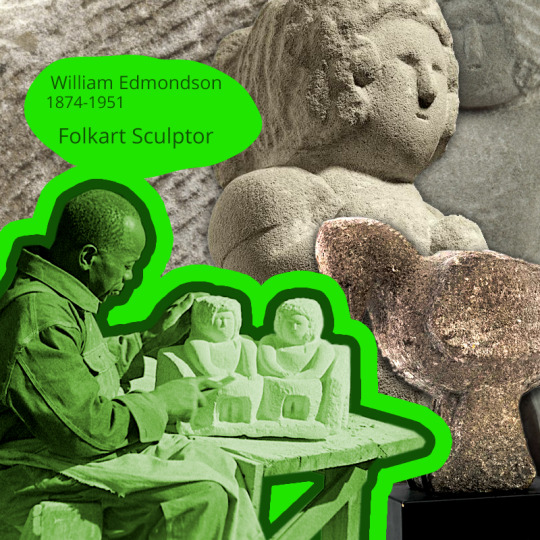
William Edmondson was born sometimes in 1874 on a plantation in Tennessee. The exact date is unknown as it was recorded only in a family bible that was destroyed in a fire.
He was born into the Jim Crow South to previously enslaved parents working as sharecroppers where they earned $12 a month.
William had little or no education, as he lacked access to it given his social status.
When his father died when he was 16, he left Davidson County for Nashville where he worked railway.
Following an injury though, he began work as a custodian at a hospital and worked there until it closed in 1931.
With those wages, he was able to buy a modest home where he lived with his mother and sister, and occasionally other relatives.
You might find yourself asking where the art begins?
It might surprise you to learn William would not enter the world of sculpture until he was 60 years of age.
As a child, William would say he saw angels and god spoke to him, and as an older man he said that he began to sculpt following a vision from god.
"I was out in the driveway with some old sculptures of stone when I heard a voice telling me to pick up my tools and start to work on a tombstone. I looked up in the sky and right there in the noon daylight, he hung a tombstone out for me to make. I knowed it was God telling me what to do."
He began with tombstones made of discarded limestone from demolitions but soon began branching out into ornamentation and decoration. He even sold them. A sign in his front yard read "Tomb-Stones. For Sale. Garden. Ornaments. Stone Work WM Edmondson"
As it should already be very clear, William was a deeply religious man and his work was greatly influenced by his faith as well as a nearby Calvinist Baptist congregation nearby. His work depicted biblical characters, animals and even local prominent community leaders such as lawyers and preachers. And also, popular figures like Jack Johnson and Eleanor Roosevelt.
His largest and only architectural work, stood in his backyard. A sculpture of Noah's Ark, made of four carved tiers of limestone.
One day, an art enthusiast from Peabody College, Sidney Hirsche happened to be wandering through Edgehill where William lived and came across the sculptures.
A collector, Hirsche knew he had found something special, and became one of William's greatest supporters.
His work which was largely given to and bought by friends and neighbors, was now being purchased by the elite of Nashville, for their gardens and offices.
It gardened serious attention, from Harper's Bazaar to the Museum of Modern Art. But also adversity, a friend of a friend of Hirsche, photographer Louise Dahl-Wolfe tried to publish her photographs of William's sculptures to William Randolph Hearst, but a racist, he would not publish the work of black artists.
Luckily, better heads prevailed elsewhere.
The Museum of Modern Art, in 1937 exhibited his work as a one man show. A first for a black artist.
William was incredibly prolific despite having a career of only about fifteen years, he's thought to have made some 300 works of art.
He died in his home in Nashville after months confined to a bed from illness. He's buried in Nashville's oldest cemetery, Greenwood Cemetery (then Mount Ararat Cemetery), but the exact site of his final resting place, like the exact date of his birth, has been lost in a fire.
William, like many outsider artists, is sometimes buried under reductive adjectives such as primitive. But while his figures are stout and emphatic, they are in fact sophisticated, especially given how late and how short a career he had.
If you would like to see more of William's work or learn more about his life:
A ‘Holy Grail’ of American Folk Art, Hiding in Plain Sight
SAAM - William Edmondson
Curious Nashville: Where Famed ‘Outsider’ Artist William Edmondson Lived And What’s There Now
The Sculpture Of William Edmondson: Tombstones, Garden Ornaments And Stonework
#Black History Month#Black Art History#Black Artist#Black Sculptor#Sculpture#sculptor#William Edmondson#Outsider Artist#Folkart#Folkartist
3 notes
·
View notes
Text

ci-dessus et ci-dessous (détail) : Atom Egoyan, Steenbeckett , 2002, grand livre, fiches, cartouches de film, film 35 mm, chargement du film, bobine de film de 2 000 pieds, machine de montage Steenbeck, détérioration du film 35 mm
L'installation cinématographique labyrinthique Steenbeckett d'Atom Egoyan met en évidence la ruine physique et le déclin de la technologie cinématographique. Tout comme le visage et les mains ridés du protagoniste de l'œuvre signifient sa décadence et sa mort imminente, son image, chimiquement imprimée sur une bande de celluloïd, se raye et se déchire, représentant la disparition dans l'oubli du cinéma lui-même à chaque voyage précaire à travers le installation.
Atom Egoyan est un cinéaste acclamé par la critique, surtout connu pour ses films The Sweet Hereafter (1997) et Ararat (2002), pour lesquels il a remporté un prix Dan David pour le rendu créatif du passé (2008). Pour son installation de 2002 à l'ancien Museum of Mankind à Londres, Egoyan a réutilisé la dernière bobine de son long métrage Krapp's Last Tape (2000), enfilant une seule prise de 20 minutes comprenant 2000 pieds de celluloïd à travers un chemin complexe de poulies suspendues pignons entraînés par une table de montage Steenbeck démodée. Ce faisant, Egoyan a créé une œuvre à la fois à partir de et sur la détérioration et la disparition de l'appareil physique du cinéma.
En fin de compte, la mort du cinéma n'est pas une mise à mort aux mains du numérique – au contraire, la création et la diffusion mêmes du cinéma ont toujours présupposé sa propre destruction. Dans le même temps, la supériorité présumée de la transmission numérique est remise en question – la rapidité et la facilité avec lesquelles elle est créée s'appliquent également à son effacement. Comme le dit Egoyan lui-même, « quelques coups de clavier » suffiront.

typology.ca
The Future Perfect: cinema and obsolescence in contemporary art
Merci à @krisis-krinein / krisis-krinein.tumblr.com
4 notes
·
View notes
Text
7 interesting things you need to know about Armenia
With its rugged mountainous terrain and ancient heritage, Armenia has a unique blend of natural beauty and historical wonder. From being one of the oldest wineries in the world to being the first country to adopt Christianity as a state religion, Armenia’s heritage is deep and fascinating. The capital city of Yerevan features a mix of Soviet-era architecture and modern development. This small country also has breathtaking scenery, including the iconic Mount Ararat, which, although located in modern-day Turkey, has medieval monasteries, ancient churches, and archaeological sites to its credit. The country of Armenia, which remains a great symbol of its supposed past, is famous for its. Here are seven fascinating things to know about Armenia that highlight its unique beauty and enduring spirit.
A hidden gem in the South Caucasus region, Armenia is a country steeped in history and culture, offering rich experiences to those willing to explore its depths. Armenia’s seven fascinating aspects make it a place unique and exciting.
7 interesting things you need to know about Armenia
1. Practicing Christianity
Armenia adopted Christianity as the state religion in 1800 AD and retains the distinctive title of the First Nation. St. Gregory the Illuminator and King Tiridates III presided over this grand event. As a result, Armenia has ancient churches and monasteries, many dating back to the first centuries of Christianity. 303 A.D. Echmiadzin Cathedral, built in 1900, is considered the oldest cathedral in the world and is the spiritual center of the Armenian Apostolic Church. Visitors to Armenia can explore these historical and religious sites and learn about the spirituality of the country's deep heritage.
2. Ancient winemaking traditions
Armenia has one of the oldest winemaking traditions in the world, with evidence of grape production dating back more than 6,000 years. Discovered in 2007, the Areni-1 cave revealed the oldest known wine cellar in the world, complete with fermentation vessels, wine printing vessels, and storage vessels. This is an ancient practice even today, and Armenia produces wine varieties that reflect long-standing knowledge in grape production. The country’s internationally recognized wines, especially those made from indigenous grape varieties such as Areni Noir, Wine lovers visiting Armenia can visit the vineyards and taste some of the region’s best wines.
3. A wonderful landscape
Armenia’s diverse and beautiful landscapes range from rugged mountains to dense forests and arid deserts. The Lesser Caucasus Mountains dominate the country’s terrain, with Mount Aragats being the highest peak at 4,090 meters. Although Mount Ararat, a symbol of national pride on the Armenian flag, is located just across the border in Turkey, Lake Sevan, one of the largest freshwater lakes in the world, makes Armenian culture and history a major part of its personality.
4. Rich cultural heritage
Armenia’s cultural heritage is a testament to its storied past and vibrant present. The country is known for its unique Armenian architecture, including beautifully carved stone, khachkars (stone crosses), unique temple frescoes, and Yerevan museums such as the Matendaran (Institute of Ancient Manuscripts). Some of the oldest manuscripts in the world and some of the documents in literature and science are preserved. Showcasing the country’s historical contributions, Armenian music and dance, with their unique songs and rhythms, play a central role in the country’s cultural identity and preservation.
5. Armenian food
Armenian cuisine is an intriguing blend of flavors, reflecting the country’s geographical and historical influences. Specialties such as lavash (traditional flatbread), khorovats (barbecue), and dolmas (stuffed grape leaves) are an integral part of Armenian cuisine. Fresh herbs and spices combine with age-old cooking techniques to create delicious and nutritious dishes.
Visitors can enjoy a variety of traditional dishes, often including Armenian brandy, which is renowned for its quality and smoothness and is favored by celebrities such as Winston Churchill.
6. A resilient soul
Armenia’s history is resilient. The Armenian Genocide, in which an estimated 1.5 million Armenians died in 1915, is a poignant chapter in the country’s history. Despite such tragedy, the Armenian people showed remarkable strength and resilience. On April 24th, the genocide is commemorated every year, and the Armenian Genocide Memorial in Yerevan stands as a solemn reminder of the past and a testament to the enduring spirit of the Armenian people.
7. Warm hospitality
Armenians are known for their warm and friendly hospitality. Family and community play an important role in Armenian society, and this is reflected in the welcoming nature of the people. Travelers are often invited to share meals, celebrate festivals, and participate in local customs. This genuine hospitality makes a visit to Armenia a comprehensive and enriching experience, leaving a lasting impression on people exploring this fascinating country.
Conclusion
Armenia is a treasure trove of history, culture, and natural beauty, offering every traveler a unique experience. From its uniqueness as a leading Christian country to its ancient winemaking traditions to its stunning landscape and rich cultural heritage, Armenia captivates and inspires, and the resilient spirit of its people and their hospitality add to the beauty of this fascinating country. Whether exploring its historic monasteries or sampling its delicious cuisine, Armenia promises an unforgettable trip. Obtaining an Armenia visa is a simple process for those planning to visit, opening the way for an enriching journey in this amazing country.
0 notes
Photo

New Post has been published on https://massispost.com/2024/02/ararat-eskijian-museum-research-center-and-the-promise-armenian-institute-launch-vahakn-n-dadrian-archive-project/
Ararat-Eskijian Museum Research Center and The Promise Armenian Institute Launch Vahakn N. Dadrian Archive Project

LOS ANGELES — The Ararat-Eskijian Museum Research Center (AEMRC) and the Armenian Genocide Research Program (AGRP) within The Promise Armenian Institute at UCLA have announced the launch of the Vahakn N. Dadrian Archive Project. Professor Vahakn N. Dadrian (1926–2019) was a preeminent scholar of the Armenian Genocide and instrumental in establishing the larger field of genocide studies. He lectured and published widely in the field, leading to greater international recognition of the Armenian Genocide. His unique collection of archival materials and books is of extraordinary value to those researching the origins of the Armenian Genocide, the Genocide itself and its…
0 notes
Text
Explore Turkey: Top 10 Amazing Places to Visit with StampThePassport!
Introduction:
Turkey is a treasure trove of captivating destinations, seamlessly blending history, culture, and natural beauty. If you're planning a visit, getting a Turkey visa online is a breeze. Now, let's explore the top 10 must-visit places that will leave you in awe.
1. Istanbul - Where East Meets West: Start your adventure in Istanbul, a city that's on two continents, Europe and Asia. Enjoy the lively markets, beautiful mosques, and the famous Hagia Sophia.
2. Cappadocia - Fairy-Tale Landscapes: Visit Cappadocia for its dreamy landscapes filled with cave homes and colorful hot air balloons. Don't forget to explore the Göreme Open-Air Museum for a trip into the past.
3. Pamukkale - Cotton Castle: Pamukkale, also known as the Cotton Castle, is famous for its pools made of white rock. Relax in the warm, mineral-rich waters while taking in the pretty views.
4. Ephesus - Ancient Time Travel: Step back in time at Ephesus, where you can explore ancient ruins like the Library of Celsus and the Temple of Artemis.
5. Antalya - Beautiful Beaches: Antalya's Turquoise Coast has amazing beaches and old ruins. Wander around the historic Kaleiçi district for a mix of history and modern charm.
6. Bodrum - Sunny Beaches and Castles: Bodrum, with its blue waters and old castle, is perfect for beach lovers and history fans.
7. Troy - Legendary City: Explore the famous city of Troy, a UNESCO World Heritage site known for inspiring stories like Homer's epic poems.
8. Ankara - Modern Capital City: Check out Ankara, the modern capital, to see a glimpse of everyday life in Turkey. Don't miss the impressive Atatürk Mausoleum.
9. Gallipoli - Remembering History: Gallipoli has important historical sites from World War I. Take a moment to reflect on the significance of this place.
10. Mount Ararat - High and Beautiful: Finish your journey at Mount Ararat, the tallest mountain in Turkey, for stunning views that will leave you breathless.
Conclusion:
Travel from the busy markets in Istanbul to the peaceful scenery in Cappadocia, and you'll discover a mix of amazing experiences in Turkey. Don't forget, getting your Turkey visa online is like your ticket to these fantastic adventures.
StampThePassport:
Come and see Turkey with StampThePassport! Experience the interesting history, lively culture, and beautiful views that will stay with you forever. Make sure to get your Turkey visa online, and get excited for a trip you'll never forget!
0 notes
Text
15 Most Beautiful Places to Visit in Turkey in 2023
Turkey, a land of breathtaking landscapes, rich history, and vibrant culture, is a top destination for travelers seeking a diverse and mesmerizing experience. In 2023, the allure of Turkey continues to draw adventurers from around the world. From the ancient wonders of Istanbul to the idyllic coastal towns and natural wonders, this article presents a curated list of the 15 most beautiful places to visit in Turkey this year.
Istanbul: The Gateway to History Start your journey in Istanbul, where ancient and modern seamlessly blend. Explore the Hagia Sophia, the Blue Mosque, and the Topkapi Palace, all bearing witness to the city's storied past.
Cappadocia: A Surreal Fairy Tale Cappadocia's otherworldly landscapes, with cave dwellings and towering rock formations, are a must-see. Take a hot air balloon ride to witness the sunrise over this enchanting region.
Pamukkale: The Cotton Castle Marvel at the cascading terraces of Pamukkale, where mineral-rich thermal waters create an ethereal landscape, resembling a cotton castle. Don't forget to visit the ancient city of Hierapolis nearby.
Ephesus: Walk Through History Ephesus is one of the best-preserved ancient cities in the world. Stroll through the Library of Celsus, the Grand Theatre, and the Temple of Artemis, and step back in time.
Antalya: Turquoise Coast Delight Antalya's pristine beaches, crystal-clear waters, and charming old town make it a perfect destination for beach lovers and history enthusiasts alike.
Bodrum: A Mediterranean Gem Bodrum, with its beautiful beaches, vibrant nightlife, and the stunning Bodrum Castle, is a coastal paradise for those seeking relaxation and culture.
Troy: The Legendary City Visit the ancient city of Troy, famous in Greek mythology, and discover its rich archaeological treasures, including the legendary Wooden Horse.
Mount Ararat: A Peak Adventure For the adventurous souls, hiking to the summit of Mount Ararat, Turkey's highest peak, offers panoramic views and a sense of accomplishment.
Göreme: A Hub for Explorers Göreme serves as the gateway to the Cappadocia region, with unique cave hotels, open-air museums, and access to the captivating fairy chimneys.
Antakya: The City of Mosaics Antakya, the ancient city of Antioch, is renowned for its exquisite Roman mosaics. The Hatay Archaeology Museum is a treasure trove of ancient art.
Side: A Blend of Antiquity and Beaches Side is a picturesque town where ancient ruins, such as the Temple of Apollo, meet beautiful beaches, offering a perfect mix of history and relaxation.
Mount Nemrut: Statues of the Gods The monumental statues at Mount Nemrut are a testament to the grandeur of the Kingdom of Commagene. The sunrise and sunset views from the summit are simply awe-inspiring.
Sumela Monastery: A Cliffside Marvel Nestled into the cliffs of the Black Sea region, the Sumela Monastery is a marvel of Byzantine architecture and offers stunning panoramic views.
Fethiye: Land of Lycian Tombs Fethiye, with its ancient Lycian rock tombs, pristine beaches, and the mesmerizing Butterfly Valley, is a coastal gem on the Turquoise Coast.
Patara: A Hidden Gem Patara boasts a 18-kilometer-long sandy beach, the ancient Lycian city ruins, and protected loggerhead turtle nesting grounds, making it a tranquil and pristine destination.
Conclusion: With its rich historical tapestry, diverse landscapes, and a blend of old-world charm and modern comforts, Turkey is a captivating destination in 2023. From the iconic city of Istanbul to the surreal landscapes of Cappadocia, and the pristine beaches along the Turquoise Coast, Turkey offers an array of beautiful places to explore. Whether you're a history buff, an adventure seeker, or simply in search of relaxation, Turkey has something for every traveler. Don't miss the chance to embark on an unforgettable journey through these 15 stunning destinations in the heart of Eurasia.
#BeautifulTurkey#TurkishAdventures#ExploreTurkey#2023Travel#HistoricIstanbul#CappadociaDreams#PamukkaleWonders#EphesusExploration#TurquoiseCoast#BodrumBliss#TroyLegends#MountAraratTrek#GoremeCaves#AntakyaMosaics#SideAntiquity#MountNemrutViews#SumelaMonastery#FethiyeGem#PataraParadise#TravelInspiration#BucketListTurkey
0 notes
Text
Top 5 unique places to visit in Turkey

There are many Unusual and unique places to visit in Turkey. This place does not resist the pleasing beauty and has numerous places and locations like Kekova Island and Kackar mountains. Turkey has always been unique with the activities it offers, be it skiing in the blue waters or taking train rides from the city into the wild, offbeat things to do in Turkey is not limited. You should definitely get yourself a Turkey visa and must visit these unique places. You can get your online Turkey visa from uk via turkeyvisa.co.uk.
Here is a list of the most unique places to visit in Turkey
Underground Mosque in Istanbul

The mosque is located in Karaköy near Galata Bridge. Hidden among the alleyway of the Karaköy harbor there is an amazing Ottoman mosque. It is sunken into the earth because of this reason it is called an underground mosque or Yeralti Camii in Turkish. There are two entrances to the mosque from the street level, which lead to a short tunnel down into the earth. The mosque is dark and the ceiling is low, and just a few lamps and some strident green fluorescents illuminate the ancient tombs of two Arab martyrs.
This unique mosque has a history. It’s believed that back when the Galata neighborhood was a Genoese settlement, the site was a Byzantine fort. The basement of the fort supposedly held the enormous chain that protected the Byzantine fleet from Turkish attacks by clogging ships from getting in the Golden Horn waterway into the city.
Biblical Pilgrimage
Being home to many holy Christian sites, a trip to Turkey is often referred to as the biblical pilgrimage. The country is home to many holy Christian sites like St.Nicholas' Birthplace, Antalya, St.Nicholas Church, Early Christian Settlement, Seven Churches of the Revelation (Ephesus, Pergamon, Smyrna, Laodicea, Sardis, Philadelphia, Thyatira), and Assyrian Orthodox Church of Virgin Mary.
Those who plan a holy trip to turkey must visit these spiritual places. This place is also famous for its architecture and physical vibes.
Pamukkale & Hierapolis

The spring waters that have poured down this hillside for thousands of years have created a marvelous sight. Located in Turkey’s Büyük Menderes Valley, the 17-tiered pools of Pamukkale – which means ‘cotton castle’ – make up the most amazing thermal spring you’ll ever see. You can find the stacked white Travertine terraces overlooking the city of Denizli. Pamukkale used to be the most popular thermal pools in Turkey. It was a spa, first used in the 2nd century BC, and famous for its healing properties. Today, the perfectly blue water that fills these white limestone bowls is at 34 degrees Celsius temperature.
Your trip is incomplete without a stop in Hierapolis, It is one of the first thermal spa resorts in the world. This spa city was founded at the end of the 2nd century and is home to the famous Antique Pool, also called the ‘Cleopatra Pool’.
Ancient Ephesus
Ephesus is one of the great outdoor museums of Turkey. In ancient times, Ephesus was a port city and was one of the most important Greek outposts and trading centers in the entire Mediterranean region. Throughout history, many different rulers conquered the city. It even played a role in spreading Christianity in the area.
In today’s time, Ephesus is one of the largest and most celebrated Roman archaeological sites in the eastern Mediterranean and remains a popular Christian pilgrimage destination. In 2015, the ancient town was included as a UNESCO World Heritage Site.
You can also visit nearby famous places like the House of the Virgin Mary on Mount Nightingale and the Ruins of the Temple of Artemis, which is one of the Wonders of the Ancient World.
Mount Ararat

Mount Ararat is actually two separate peaks, both of which are dormant volcanoes. Their summits are snow-capped throughout the year. This mountain is famous because it’s believed to be the mountain on which Noah and his ark landed during the great flood.
If you want to do some trekking, climbing Mount Ararat doesn’t require much technical skill as most of the path is quite easy. The biggest challenge is the altitude, as it is over 5,000m high. The trek takes around 8-9 hours.
#turkey visa#turkey visa uk#online turkey visa from uk#30 days turkey visa#turkey visa agency#get turkey visa online#turkey visa agent from uk
1 note
·
View note
Text
Production of Monuments in Armavir
There are several steps that are involved in the изготовление памятников Армавир. These include the sculptors involved, the materials used, and the cost of the final monuments. In this article, we will examine these steps. After you have a good understanding of these steps, you'll be ready to purchase your monument of choice!
Processes involved in the production of monuments in Armavir
The process of producing monuments in Armavir has many steps. It includes study, excavation, and restoration. These processes are under the general supervision of the RoA Ministry of Culture. The preservation process of monuments in Armavir is governed by the RoA Law on Historical and Cultural Monuments and Historical Landscapes.
The monuments in Armavir are protected by the state through a monument preservation officer. This person also supervises urban planning and construction projects in the protected areas. The preservation officer ensures the safety of the monuments and sets the rules for their rehabilitation. Excavation of monuments is prohibited if they fall within the preservation zone. The Ministry of Culture takes legal action against those who cause damage to monuments.
Sculptors involved
The sculptural production of Armenia is very diverse, ranging from the second to the fourth centuries B.C. Some of the most noteworthy works include the famous bronze head of Aphrodite, now in the British Museum, and a small female torso carved in white marble from Armavir. Other sculptures are in the form of boundary markers, such as the one of king Artaxias I. These markers were made in the early second century B.C., and are more significant because of the Aramaic inscriptions on them.
Sculpture is a creative process that requires a detailed plan. A plan of reference is essential for maintaining linear proportion. Sculptors usually work within a spatial plan based on a system of planes and axes. Human figures, for example, are often posed with reference to the four cardinal planes.
Materials used
There are many different materials that can be used in the production of monuments. The most popular materials include granite, marble, and bronze. Each material has its own advantages and disadvantages. Granite is a popular choice because of its high durability and natural beauty. It can also be made in many different colors, including a variety of reds, pinks, browns, greens, and blacks. Marble is also a popular choice because of its traditional beauty. Marble is usually white in color with gray veining. Bronze is another material that is commonly used for monuments, as well as flat markers and statuary. It has a high durability, but can fade if moisture penetrates its layers.
During the 19th century, a group of Armenians from Armavir moved to a settlement in the mouth of the Ararat river. This new settlement was surrounded by a rampart and a deep ditch two meters wide. As the region's population grew, the boundaries of the settlement were also altered. Originally, the settlement was an Armenian village, but later new families moved in and the area became a modern town.
Cost
One of the factors determining the cost of producing a monument is the amount of material used in its production. There are many materials that can be used to create a monument, but granite is one of the most common. The cost of producing a monument varies depending on how many materials are used and the level of craftsmanship. The more materials used, the higher the price will be. Another factor determining the price is the design of the monument.
Monuments can also be produced in different styles. For example, there are upright and slant types of monuments. Upright monuments are generally more striking than flat markers. There are many different design options available for upright monuments, and each one is different. In addition, the monuments can be personalized. Other styles include slant and bevel markers. Flat markers, on the other hand, are limited in their design and are often hard to find in a cemetery.
Location
The historical city of Armavir has a rich cultural heritage. It was originally inhabited by the Seleucids and the Parthians. It later became the capital of Armenia. The city is located near the Kuban River. The earliest inscriptions on its ruins date back to the 6th millennium BC. Many ancient objects, including bronze objects and pottery, were found in the town.
The city of Armavir is located 44 kilometers west of Yerevan. It is a cultural and spiritual center for the Armenian people. It is home to numerous historical monuments, including the oldest bronze forging site in the world. The city also features the Treasury Museum, which houses a unique collection of church art. Visitors can also explore peaceful gardens with khachkars from all over Armenia.
1 note
·
View note
Photo

«Diesseitigbin ich gar nicht fassbar... ("I am not at all graspable in this world..."). Holograph text by Klee in Der Ararat (Munich), 2d special issue (1920), p. 20, catalog of Klee exhibition, Galerie Goltz, Munich», in Paul Klee, Edited by Carolyn Lanchner, The Museum of Modern Art, New York, NY, 1980, p. 66 [Exhibitions: MoMA, New York, NY, February 12 – May 5, 1987; The Cleveland Museum of Art, Cleveland, OH, June 24 – August 16, 1987. Kunstmuseum Bern, Bern, September 25, 1987 – January 3, 1988]
«This passage does not appear in Klee's diaries; he published it in 1920 in Ararat, a journal put out by the Galerie Goltz of Munich on the occa sion of Klee's first, large one-man show. Reproduced in the journal in facsimile, this handwritten passage has the unmistakable look of a program.» – Jürgen Glaesemer, Paul Klee and German Romanticism, in Paul Klee, Edited by Carolyn Lanchner, The Museum of Modern Art, New York, NY, Published with the assistance of the J. Paul Getty Trust, 1980, p. 67 [audio: Art historian Jürgen Glaesemer discusses Paul Klee and German Romanticism in the seventh annual Hilla Rebay Lecture, which took place on November 18, 1986. The Guggenheim Museums and Foundation, New York, NY]
#art#handwriting#exhibition#magazine#catalogue#catalog#paul klee#carolyn lanchner#jürgen glaesemer#der ararat#moma#the museum of modern art#the cleveland museum of art#kunstmuseum bern#1980s
24 notes
·
View notes
Photo
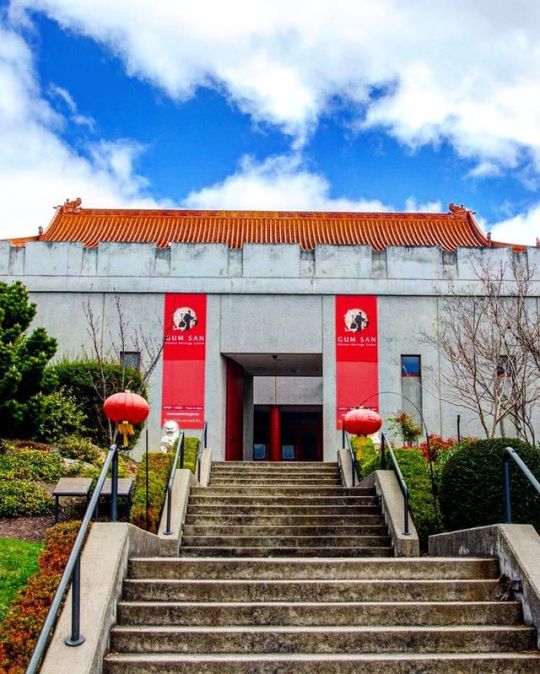
Ararat, the first and only city in Australia built by Chinese people during the gold rush. Now, Chinese people have left and the city has little no trait of Chinese except for the museum. . . #Follow Our Adventures & Discover Travel Destinations in Australia @youmeandthesky0301 . . #ararat #australia #chinesecity #goldrush #victoriaaustralia #araratmuseum #australiaroadtrip #australiacity #museum #australiaimmigration #immigration #australianhistory #history #mynikonmoment #nikond7000 #googlelocalguides #letsguide #オーストラリア #歴史 #博物館 #アララット (at Ararat, Victoria) https://www.instagram.com/p/B2G4hodBTfl/?igshid=1a8ecacsd4r5p
#follow#ararat#australia#chinesecity#goldrush#victoriaaustralia#araratmuseum#australiaroadtrip#australiacity#museum#australiaimmigration#immigration#australianhistory#history#mynikonmoment#nikond7000#googlelocalguides#letsguide#オーストラリア#歴史#博物館#アララット
0 notes
Photo

The 10,000 martyrs of Mt Ararat (detail): Roman soldiers who, according to a medieval legend, converted to Christianity and were crucified on Mount Ararat by order of the Roman emperor (ca.2nd century). Meister der Heiligen Sippe, Frankfurt ~ ca.1495 Wallraf-Richartz Museum Köln • via Bibliothèque Infernale on FB
65 notes
·
View notes
Text
Yerevan

Mother Armenia

Cascades


Shooting range in a park. Default targets: Erdogan, Putin, Kardashian.

The men.


Armenian idol.

Tsitsernakaberd - monument of Armenian genocide.


Ararat - iconic drink named after a sacred mountain.

Opera square.
#Armenia#Yerevan#Praktica#tsitsernakaberd#cafesijan museum#amusement park#shooting#tiger#mother armenia#statue#the men#opera#ararat
4 notes
·
View notes
Text
Experiencing Armenia: A Comprehensive Guide to Top Destinations and Visa Requirements
Armenia, nestled in the South Caucasus region, offers a captivating blend of ancient history, stunning landscapes, and vibrant culture. From its UNESCO World Heritage sites to its picturesque countryside, there's an abundance of places to explore. In this guide, we'll unveil the top destinations to visit in Armenia and provide essential information on visa requirements for travelers.
Yerevan: Begin your Armenian journey in its capital city, Yerevan, known as the "Pink City" for its distinctive rose-colored buildings. Explore the bustling streets of the city center, where modern cafes and restaurants blend with Soviet-era architecture. Don't miss the iconic Cascade Complex, Matenadaran Manuscript Museum, and the poignant Armenian Genocide Memorial.
Garni Temple: Journey back in time to the ancient Hellenistic era with a visit to Garni Temple, the only surviving pagan temple in Armenia. Perched majestically on a cliff overlooking the Azat River Gorge, this architectural marvel is a testament to Armenia's rich cultural heritage. Marvel at its Greco-Roman design and panoramic views of the surrounding landscape.
Also Read: Georgia visa
Geghard Monastery: Discover the spiritual oasis of Geghard Monastery, a UNESCO World Heritage site nestled within the picturesque Azat River Valley. Carved into the rock formations, this medieval monastery complex is renowned for its unique architecture and sacred relics. Explore the intricately adorned chambers and chapels, and immerse yourself in the tranquil ambiance of this ancient sanctuary.
Lake Sevan: Escape to the serene shores of Lake Sevan, the "Jewel of Armenia," located amidst the stunning landscapes of the Armenian Highlands. Admire the azure waters of the lake, framed by lush forests and snow-capped mountains. Explore the historic Sevanavank Monastery perched on a peninsula, and indulge in local delicacies such as fresh fish from the lake.
Also Read: Philippines visa
Tatev Monastery: Embark on a scenic journey to Tatev Monastery, perched atop a rugged cliff in the Syunik Province. Accessible via the Wings of Tatev aerial tramway, this medieval monastery complex offers panoramic views of the Vorotan River Gorge. Explore its ancient churches, chapels, and fortifications, and marvel at the intricate stone carvings adorning its walls.
Noravank Monastery: Unveil the architectural splendor of Noravank Monastery, nestled amidst the red-hued cliffs of the Amaghu Valley. Dating back to the 12th century, this historic monastery complex is renowned for its ornate stone carvings and stunning backdrop. Visit the iconic Surb Astvatsatsin Church and the intricate Noravank Khachkar, a UNESCO Intangible Cultural Heritage.
Also Read: Russia visa
Dilijan National Park: Immerse yourself in the pristine wilderness of Dilijan National Park, often referred to as "Armenia's Switzerland." Explore lush forests, crystal-clear lakes, and meandering hiking trails amidst the breathtaking landscapes of the Lesser Caucasus Mountains. Discover the historic monasteries of Haghartsin and Goshavank, nestled amidst the verdant surroundings.
Also Read: Cameroon visa
Khor Virap Monastery: Unravel the spiritual significance of Khor Virap Monastery, located at the foot of Mount Ararat near the Turkish border. This revered pilgrimage site offers panoramic views of the iconic Mount Ararat, believed to be the resting place of Noah's Ark. Explore the underground chambers where Saint Gregory the Illuminator was imprisoned, and soak in the tranquil ambiance of this sacred sanctuary.
Also Read: India visa
Jermuk: Relax and rejuvenate in the scenic spa town of Jermuk, renowned for its mineral-rich hot springs and therapeutic waters. Nestled amidst the lush forests of the Vayots Dzor Province, Jermuk offers a tranquil retreat amidst the natural beauty of the Armenian Highlands. Indulge in spa treatments, take a leisurely stroll along the Jermuk Waterfall, and sample local delicacies such as Jermuk mineral water and honey.
Also Read: Hong Kong visa
Gyumri: Experience the vibrant culture and rich heritage of Armenia's second-largest city, Gyumri. Explore its historic streets lined with colorful 19th-century buildings, and visit landmarks such as the Black Fortress and the Sev Berd Fortress. Discover the city's artistic soul at the Gyumri Museum of National Architecture and Urban Life, and immerse yourself in the lively atmosphere of the Kumayri Historic District.
Guide to Armenia Visa Requirements:
Traveling to Armenia is relatively straightforward for many nationalities, as it offers visa-free access or visa-on-arrival for citizens of numerous countries. However, it's essential to check the visa requirements specific to your nationality before planning your trip. Here's a guide to Armenia visa requirements:
Visa-Free Countries: Citizens of several countries, including EU member states, the United States, Canada, Australia, and many others, can enter Armenia visa-free for short stays ranging from 90 to 180 days. Travelers should check the official website of the Ministry of Foreign Affairs of Armenia for the latest information on visa-free access.
Visa-On-Arrival: For citizens of countries not eligible for visa-free access, Armenia offers a visa-on-arrival option at Yerevan Zvartnots International Airport and certain land border crossings. Travelers can obtain a visa-on-arrival for a fee and valid for stays of up to 120 days. However, it's advisable to check the specific requirements and conditions before traveling.
E-Visa: Armenia also offers an electronic visa (e-visa) application system for citizens of select countries. Travelers can apply for an e-visa online through the official website of the Ministry of Foreign Affairs of Armenia. E-visas are typically issued within a few business days and are valid for single-entry visits for tourism or business purposes.
Visa Extensions: For travelers planning to stay in Armenia for longer than the permitted visa-free or visa-on-arrival period, it's possible to extend their stay by applying for a visa extension at the Passport and Visa Department of the Police of the Republic of Armenia. Extensions are subject to approval and must be requested before the initial visa expires.
Important Documents: When applying for a visa or entering Armenia, travelers should ensure they have a valid passport with a minimum validity of six months beyond the intended stay, as well as any required supporting documents such as proof of accommodation, return flight tickets, and travel insurance.
Conclusion: Armenia's rich history, breathtaking landscapes, and warm hospitality make it a captivating destination for travelers seeking an authentic cultural experience. From the ancient monasteries of Geghard and Tatev to the vibrant streets of Yerevan and Gyumri, there's no shortage of places to explore in this enchanting country. Whether you're drawn to its UNESCO World Heritage sites, picturesque natural scenery, or vibrant urban culture, Armenia offers a wealth of experiences waiting to be discovered. With its relatively straightforward visa requirements and welcoming atmosphere, Armenia invites travelers from around the world to embark on a journey of discovery and exploration.
0 notes